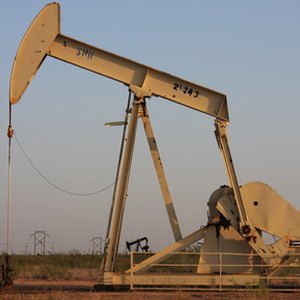
Oil is a non-renewable source of energy. By definition, its stocks are limited, which means that in the future the price of oil will rise, reflecting its scarcity. This is the rationale behind the recent surge of interest in investing in crude oil.
There are different ways in which you can buy crude oil. However, none of them involves physical buying and delivery of crude oil, unless you have storage facilities and refining capacity. You can buy oil futures--contracts for oil delivery, you can purchase oil stocks, or you can invest in oil-related exchange-traded funds (ETFs)--investment funds that use different strategies to invest in oil and try to track the price of crude oil on international markets.
Learn as much as you can about the oil industry. What are the factors that cause oil prices to rise and fall? What makes supply and demand of oil expand or shrink? How does Chinese demand or OPEC's manipulation of oil prices impact the industry?
You can find answers to these and other questions in many books written on the subject. It is better for you to read books written by star oil traders and investors. For more up-do-date information on developments in the oil business, you can follow financial press and special reports from the business information agencies like Reuters-Thompson or Bloomberg.
Find a good broker that trades oil futures, oil stocks and oil-related ETFs. Make sure your broker offers a wide range of oil-related instruments, charges reasonable commission fees, and has a good reputation. Go for a well-established broker with a lot of clients. Check your broker's "legitimacy" with its regulator (Commodity Futures Trading Commission (CFTC) in the U.S.).
Open a demo account with your broker. Nearly all brokers allow anyone to open a demo account. A demo account in all respects looks like a real account but the money is not real. Brokers give access to demo account to potential clients for them to get acquainted with the brokers' trading platforms and learn trading and investing in financial instruments by trial and error.
Trade on your demo account, testing trading and investment systems that you will have learned from the books. Try to learn how to predict oil price movements.
Determine how much money you are willing and able to invest in oil. Brokers that allow you to trade oil futures, oil stocks and oil-related ETFs generally require a minimum deposit to start trading with them--$1,000 or $2,000 is usually enough.
Open a live account, deposit funds, and start trading. Opening live accounts is usually done online and will take about 10 minutes of your time. You will be able to deposit funds to your account via a bank wire transfer that normally takes about 2 to 5 days to complete.
As your broker receives the funds you sent him, he will deposit them in your trading account and you will be able to start trading. Invest in those instruments with which you had success on your demo account. If you suffer losses and feel the need to train a little more on the demo account, stop your trading and investment activity and do that. All in all, be cautious and trade profitably!
References
Writer Bio
Eliah Sekirin started writing newspaper articles in 2003. His work has appeared in "Junij Poliyehnik" and on Web sites such as Prepodi.com. His writing interests are business, finance, economics, politics, arts, history, culture and information technology. Eliah holds a Bachelor of Science in econometrics from Kiev Polytechnic Institute.

